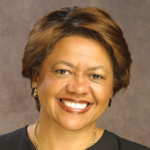 Investing in women and girls has become the mantra of the day in corporate and private philanthropy. Even the U.S. State Department issued a bold declaration placing gender equality at the center of the U.S. foreign policy. It states: “No country can get ahead if it leaves half of its people behind. That is why the United States believes gender equality is critical to our shared goals of prosperity, stability and peace, and why investing in women and girls is critical to US foreign policy.”
Investing in women and girls has become the mantra of the day in corporate and private philanthropy. Even the U.S. State Department issued a bold declaration placing gender equality at the center of the U.S. foreign policy. It states: “No country can get ahead if it leaves half of its people behind. That is why the United States believes gender equality is critical to our shared goals of prosperity, stability and peace, and why investing in women and girls is critical to US foreign policy.”
For some reason, it seems easier to address gender equality when it comes to the status of women and girls outside the United States. Here at home, nonprofit organizations that have been the backbone of local youth programs are being starved of funding. Thirty years ago the women’s funding movement was born out of recognition of wide disparity in philanthropic support for women and girls and racial minorities. At the time, only 3 percent of institutional philanthropy was designated to support women and girls’ programming. The latest Foundation Center estimates put that figure at around 7 percent today. But we have a long way to go to achieve full gender equality. In addition to cuts in federal and state spending on social-service initiatives, major foundations are looking for proven models that can be scaled and replicated.
The fact is, most nonprofits are founded and function in a local context, as part of the fabric of local communities. Many lack the capacity and infrastructure to meet these new criteria for scaling and collective impact. This is especially true in underserved communities. It doesn’t mean these organizations are not providing valuable and much-needed programming for young people, girls and boys. It simply means that many don’t fit today’s funder’s expectations for a ROI – return on investment. While I certainly share the belief that what gets measured is what gets done, I also believe complex social problems like gender and racial inequality can’t be reduced to looking at annual returns, like an IPO.
When it comes to investing in programming for girls, we need not only increased funding, we need a deeper commitment to invest in programs that address the underlying issues that cause high-school girls to be three times more likely than boys to report being physically forced to have sexual intercourse, and two times more likely than boys to have been bullied online. Progress in reducing teenage sexual assault and violence against girls has not kept up pace with the progress we’ve seen in reducing teenage pregnancy during the past decade.
One high-school drop out is too many. One unintended pregnancy is too many. One sexual assault is too many. One child trafficked for sexual or labor exploitation is too many. When these indicators are further layered with poverty, unsafe neighborhoods and discrimination, a solution requires transformational investment – multi-year funding, skilled staff, and engagement of girls and young women in relationship-based solution building.
In the U.S., child sex trafficking has finally come to forefront of the social agenda, largely due to the groundbreaking work led by the Atlanta Women’s Foundation 10 years ago. Today, the Women’s Foundation of Minnesota is a model of innovation with the nation’s first comprehensive plan to address this crime.
This is why after 30 years, the Women’s Funding Network and our community of 167 women’s foundations remain even more deeply committed to women-led philanthropy and gender-specific programming, making investments in social change for gender equality.
Michele Ozumba is President & CEO of Women’s Funding Network and former President & CEO of the Georgia Campaign for Adolescent Power and Potential.































